Cabri G2 Type Rating
When potential pilots compare the Cabri G2 and the Robinson R22 the first thing they generally comment on is that the G2 is a bit more expensive to buy or fly than the R22. However, there are important reasons for this difference. Mainly, this is because the G2 is highly engineered, has been many years in the building and has innumerable safety factors. When Frank Robinson designed the R22 it was designed as a ‘throwaway’ machine, intended to be cheap to buy and to be flown for twelve years before being replaced. The G2, on the other hand, was designed for a different era, when people are looking for safety, security and longevity above cost, and this machine fits its period. Moreover, Cabri pilots point out that maintenance is cheaper on the G2 than on older machines, that the G2’s new technology means parts cost less and it is easier to work on and so labour time is shorter, which means that overall running costs are reduced.
One big attraction to the G2 is its up-to-date technology. Instructor David Milton, at Elite Helicopters, Goodwood in West Sussex, suggests that a whole body of new people who would not have learnt to fly on older training machines such as the R22, Hughes 269 and Enstrom F28, are now willing to learn to fly helicopters. However, Inge Pretl, Chief Flying Instructor, points out the G2 is an evolution, not a revolution, and that as technology evolves it is inevitable that it will be incorporated into helicopters.
New technology included in the design and execution of the G2 includes: a monocoque composite body; the Guimbal clutch design, which uses oil pressure instead of electricity to tighten and loosen the clutch belt: the digital layout of the instruments, called a EPM (Electronic Pilot Management) a three screen display which shows instrumentation, previous flights and internal damage such as overspeeding; the shrouded tail-rotor and large fin assembly, which makes the pedals very effective and a BARC back-up system, which runs directly off the battery and comes into play if the EPM screens fail; it has a dual ignition system running off one magneto and one plasma, the latter running directly from the battery; an anti-theft system key fob, which includes an engine immobilser so the engine cannot be started without the key. (If you do lose the key or the fob battery goes dead there is another way in with a code, if necessary); skid elastomeric mounts which allow the skids to move up and down (like oleos on 300 but under the actual body) and give protection from heavy landings.
The second attraction is the robustness of the design. The G2 was originally commissioned as a drone in the 1990s. Guimbal, who worked on the design, then took it over to make it into a light helicopter. He has spent many years and a lot of money in ensuring this will become a tough and safe helicopter, but, inevitably, this has increased the expense of the development.
Guimbal has also tried to make the helicopter as safe as possible in an accident, consequently there is a very robust rotorhead system with a forged aluminum alloy head made very tough owing to large spline and cone attachments to the stainless steel mast, plus the hub is belted with a fiberglass winding ‘safety belt.’ There is also a crash absorption system attached to the seat rails that should absorb any impact in an incident.
The G2 is a three blade machine like H269 and F28, arguably this make the two blades of the R22 cheaper to maintain but manufacturers of three blade machines point to the reduced anxiety about low-g push overs or mast bumping. The G2 has three fully articulated carbon and fiberglass reinforced composite blades with a large internal steel tip weight and lead balance weight increase rotor inertia (Mu effect) and a two section thick stainless steel leading edge cap to protect again erosion and are linked to the rotor hub via an elastomeric lead-lag damper. The engine is a Lycoming 360, 4 cylinder, air-cooled engine with additional oil cooler and one magneto and one plasma ignition system. Unlike the H269, but like the R22, the G2 has a carburetor engine and has a carburetor heat control. This is usually kept in automatic when the EPM is in use but has a manual back-up should the EPM fail, or the pilot feel that the governor is disguising carburetor icing and want to manage the heat control herself. In manual the pilot can either select hot (when in low power settings) or cold (in high power settings). On the carburetor heat indicator there are ‘bricks’ shown which, depending on the environmental conditions, allows the pilot to monitor the engine.
The G2 has a 700 kg gross weight, which allows a carrying weight of around 280 kg depending on the particular machines empty weight. There are three baggage lockers, one in the nose cone and two behind the pilot and next to the fuel tank under the main rotor head. The R22 has space under the seats for luggage (although this has been said to reduce the crash-worthy aspect of the machine), and the H269 has virtually no carrying space at all unless you attach a litter to the skids.
The G2 has a wider cockpit than R22, though not as wide as the H269 or F28. The pilot flies in the right seat and, like the H269 and the F28 the G2 has a cyclic stick, not the T bar of the R22. This for some pilots, who found the T-bar hard to get to grips with, is a move in the right direction.
Start-up
Maximum demonstrated wind for rotor start-up or shutdown is 40 knots, and both the rotor brake and clutch have safety systems that prevent start-up when they are applied.
Once the master switch is turned on there is an automatic checking system that includes a flight log, sensor and lines tests, highlighting any problems on the former flight. It also tells you the fuel burn of previous flights.
Then flight screen then settles to instruments and engine indicators. Under the fuel indicator there is an indication of how much fuel is being used on this flight, average fuel burn and time left until ‘fuel starvation’.
Owing to many recent debates about fuel shortages and changes Guimbal has incorporated fuel ‘potentials’ into his machine, which can use AvGas 100LL or AvGas UL91 as standard or run on a MoGas alternative (or mixtures of all three) as long as the MoGas complies with EN228 or ASTM D4814 and has a minimum octane rating of 98 and no alcohol content.
There is a single crash resistant tank but it is also permitted to remove the left hand seat to carry an extra tank, which would be useful for ferry flying.
Once checked and primed with the plasma and magneto switches both on, start-up is via a button on the collective. The clutch switch must be put in manually (as in the other machines) and is engaged not by electronic means but by oil pressure. The clutch tension actuator is fed by engine oil pressure through a four-way distributor, controlled by the clutch switch. This will be frozen into place in the case of electrical power failure.
A non-return valve maintains the pressure in an engine failure or oil pressure loss. A gas spring maintains the engine disengaged during prolonged stop.
Further checks before flight include a complete EPM failure and checking the BARC system and manual clutch.
Flying
In take off the G2 needs right pedal (clockwise rotating main rotor) and some right cyclic as there is slight leftward drift on take off. I found this was even true with a strong wind from the left. We flew up to 30 knots without noticing any particular problems though you do notice a wiggling on downwind taxying, and in the manual it explains the G2 has been tested up to 40 knots without loss of control. In hovering the fenestron tail is more effective than a tail rotor, but also more sensitive. This means that until you get used to the size and frequency of the inputs you do have a bit of a twitchy tail!
On the take off run it is helpful to lead with pedals in keeping the G2 straight, then the cyclic follows the manoeuvre and the take off is very smooth as power is brought up to climbing percentage. We climbed at 94%. The EPM on the G2 has a very helpful manifold pressure indicator that changes between throttle (FLO) mode (up to 100% corresponding to full throttle power) and power (PWR) mode that allows an extra 20% for emergency situations. The indications are shown on the screen and change between FLO and PWR as required, warning you of impending over-speed by coming up in red. At sea level in standard conditions, FLO limit corresponds to an engine power of 134 kW (180 hp) while the PWR limit corresponds to the engine rated power of 108 kW (145 hp). The engine, a Textron Lycoming O360-J2A with STC EASA.E.S.01001, like the R22 is de-rated so there is no danger of over speeding the engine. Landing is flatter than the nose down H269 but similar to the R22.
Straight and level flying is aided by a very effective trim system initiated by a coolie hat on the cyclic. This is similar to the trim system in the H269 and much better than the pull knob trim system in the R22.
On approach to the airfield if the speed is kept above 50 knots the fin keeps the helicopter straight with little pedal application, however, once the speed drops below 30 knots the fenestron takes over and becomes very effective. The easiest way to maintain a smooth approach is to treat the G2 like a turbine and start to apply right pedal early, so that when the fenestron takes over it is already balanced and does not need much more. In a sharper descent with a quicker flare the pilot needs to apply more right pedal and faster, this is particularly true if there is a wind from the right.
Guimbal has anticipated this and in the manual he says: “a shrouded tail-rotor having relatively high disk loading is immune to stall and to the vortex-ring state commonly referred to as LTE (loss of tail-rotor efficiency). What can happen, however, which is sometimes mistaken for fenestron stall is fin stall. This can occur, for example, in a shallow approach with a crosswind from the right. Here, the fin is at a high angle of attack. When the pilot enters the flare and simultaneously increases power there is an increased requirement for anti-torque thrust, meanwhile there has been a rapid decrease in tail fin lift, which means the already high angle of attack increases and can no longer compensate for the loss of airspeed. The result of this will be a large yaw to the left, which requires quick and large right pedal input. It should be possible to counteract this with pedal input, but sometimes the pilot can be too slow or the input too small. With this in mind it is worth remembering that if you keep your feet working, they will be ready to jump into position. More experienced G2 pilots already instinctively work with this difference, problems can occur with low time G2 pilots used to tail rotors, but with training this should be easily rectified.
Spot turns started in a rightward direction, with the torque of the machine and in the opposite direction for those of us used to CCW rotors like the R22. Again the right pedal showed itself to be very effective but unlike a tail rotor, which has an immediately effect, the shrouded tail-rotor has a momentary lag between the action and the reaction, so it needs practice. However, it did not take long for this to become automatic. Until you have experience it is better not to turn left (going with the torque) in heavy winds as the fenestron needs a lot of right pedal under 30 knots. However, I did turn left in these conditions but was careful not to allow the machine to spin out of control, and the R22 would also be hard to control in with-torque (right hand) turns with similar wind conditions).
Landing on sloping ground was good with the G2. It has wider skids than R22 which makes it more stable, I thought it was not as good as the H269, which is a wider heavier machine but it was extremely manageable in both directions and nose up the slope.
Emergencies:
In normal flight, the RPM is regulated by a governor (like the R22). When this is about to fail the pilot will see it ‘hunting’ over the RPM gauge, and can turn it off with a switch on the collective. However, the G2 is easy to fly without a governor, as there is a large green arc, and an amber buffer each side. The throttle itself can be little ‘snatchy’, and is smaller than on most helicopters but you soon get used to it. NB. For engine failure simulation the governor can be turned off by forcing the twist grip to NM (2000 rpm).
Vortex ring in the G2, (which we took up to the level of early warning indications) was benign and, unlike the two-bladed machines, it is possible to recover with firm forward cyclic, allowing the nose to ‘dive’ at the ground with no fear of negative ‘G’ manoeuvres, or mast bumping. This is one of the delights of the G2 that it is possible to spiral dive gently down towards the earth, while still maintaining control.
The G2 has very good autorotation characteristics. Partially this is because it has a large green arc, and hence there is very little need to move the collective to keep the rpm in the green arc, which allows the pilot’s attention to be kept on the actually descent, rather than the engine. Left pedal on entry is quite large and as the speed stabilizes can be reduced. There are a variety of ways to complete the end of the autorotation but whether you choose an early, gentle flare or a later, more severe flare, the G2 has much more inertia stored in the head thanks to its three blades and can be gently put down on the ground.
Conclusion. I loved flying the Cabri G2. As with the H269 I liked it from the first flight, but I also grew to admire its extra talents including its very effective shrouded tail rotor. Bruno is now designing a small air-conditioning unit for the machine (at present there is an ingenious piece of string which holds the door against the wind-flow) and this will be an advantage as it is very hot in the cabin with the doors shut
The Guimbal factory has now delivered its 105th Cabri, and there are serious indications that Bruno Guimbal will not only shortly produce a four seat version, but is also looking at a small turbine version, so it is no longer ludicrous to suggest that the Cabri G2 may well become the training helicopter of choice in the next few years, taking over from the older conventional tail rotor counter-clockwise moving rotors of the Robinson, Schweizer and Enstrom families.
What Guimbal designs next will probably decide whether the Cabri becomes the training machine of the future, or falls back into admired obscurity.

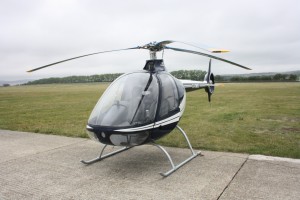
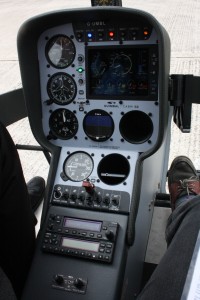
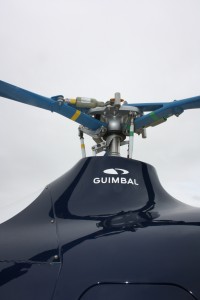
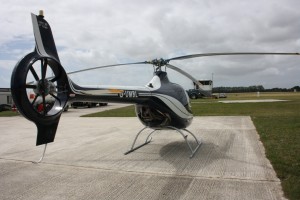
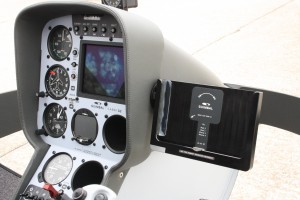
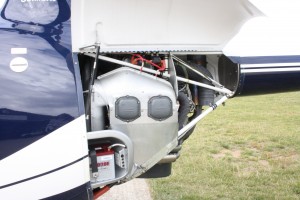
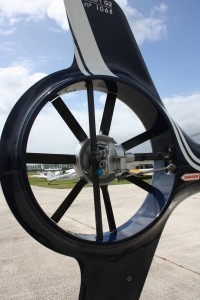
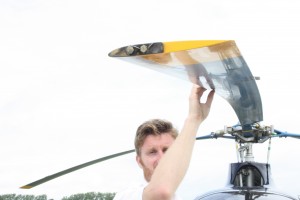
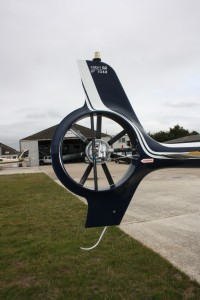
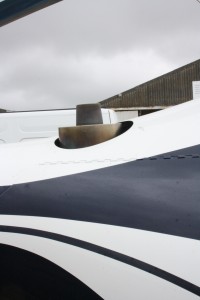

In the POH, it said the air speed is max at 30kts IAS when it’s at full power (5 mins)? Why’s that? In Robinson, higher air speed can lower the power setting and generate more lift.